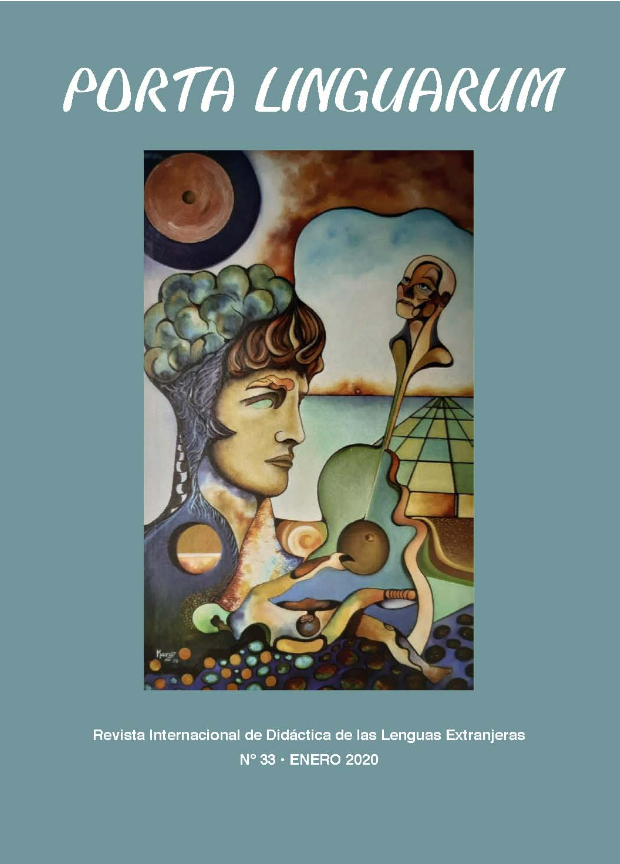Research based on Content and Language Integrated Learning (CLIL). Effective Questioning Techniques in Primary Education
DOI:
https://doi.org/10.30827/portalin.vi33.18125Keywords:
Bilingualism, CLIL, Teaching Methods, Questioning Techniques, Learning processesAbstract
This article aims to investigate the success of a testing methodology increasing the quantity of student talking time and the quality of student responses. It made use of a quasi-experimental design with non-equivalent groups and pre-test. Data about teacher students interaction was collected and analysed (using graphics and numerical descriptions for the qualitative data and descriptive statistical analyses and inferential procedures for quantitative data). The results showed that the treatment increased the content knowledge the cognitive processing and the students’ participation. Furthermore, the study confirmed the importance for teachers to learn to optimise the methods of using questions.
Downloads
References
Acree, J. & Dankert, B. (2005). Quality questioning. Research-Based practice to engage every learner. Thousand Oaks: Corwin Press.
Anderson, L., Krathwohl, D., Airasian, P., Cruikshank, K., Mayer, R., Pintrich, P., Raths, J. & Wittrock, M. (eds.) (2001). A taxonomy for learning, teaching and assessing. A revision of Bloom’s taxonomy of educational objectives. Pearson Education.
Baetens-Beardsmore, H. (1993). The European School Model, en H. Baetens-Beardsmore (ed.), European Models of Bilingual Education (pp. 121-154). Clevedon: Multilingual Matters.
Bloom, B.S. (1956). Taxonomy of Educational Objectives. New York: David McKay.
Campbell, D.T. & Stanley, J.C. (1963). Experimental and quasi-experimental designs for research on teaching. En N.L. Gage (ed.), Handbook of Research on Teaching (pp. 171-246). Chicago: Rand McNally.
Cohen, J. (1988). Statistical power analysis for the behavioral sciences (2nd ed.). Lawrence Erlbaum Associates.
Colás, M.P., Buendía, L. & Hernández, F. (2009). Competencias científicas para la realización de una tesis doctoral. Barcelona: Davinci.
Core Team (2014). R: A language and environment for statistical computing. R Foundation for Statistical Computing, disponible en: http://www.R-project.org/
Coyle, D., Hood, P. y Marsh, D. (2010). Content and language integrated learning. Cambridge University Press.
Dean, C.B., Ross, E., Pitler, H. & Stone, B. (2012). Classroom instruction that works (2nd ed.). Alexandria: ASCD.
Fisher, R. (2013). Teaching thinking: Philosophical enquiry in the classroom (4th ed.). Bloomsbury.
Forero, A. (2014). El uso de las preguntas por parte del docente en la clase de matemáticas y sus efectos en las respuestas y conversaciones de los niños (Tesis doctoral). Barcelona: Universitat Autònoma de Barcelona, disponible en: http://www.tesisenred.net
Freire, P. & Faundez, A. (2010). Por una pedagogía de la pregunta. Xátiva: Edicions del Crec, D.L.
Gall, M.D., Ward, B.A., Berliner, D.C., Cahen, L.S., Winne, P.H., Elashoff, J.D. & Stanton, G.C. (1978). Effects of Questioning Techniques and Recitation on Student Learning. En American Educational Research Journal, 15, 175-199, disponible en: http://aer.sagepub.com, consultado el 5 de septiembre de 2014.
Hunkins, F.P. (1995). Teaching thinking through effective questioning (2nd ed.). Christopher-Gordon Publishers, Inc.
Lasagabaster, D. (2000). The effects of three bilingual education models on linguistic creativity. IRAL, 38, 213-228, disponible en: http://laslab.org, consultado el 11 de agosto de 2014.
Lorenzo, F., Trujillo, F. & Vez, J.M. (2011). Educación Bilingüe. Integración de contenidos y segundas lenguas. Editorial Síntesis.
Madrid, D. (1995). Internal and external factors affecting foreign language teaching. En C. Medina y L. García (Eds.), I Jornadas de Estudios Ingleses (pp. 59-82). Universidad de Jaén, disponible en: http://www.ugr.es.
Madrid, D. & Madrid, M. (2014). El profesor y la investigación en el aula. En D. Madrid, C. Guillén y A. López (Eds.), Estudios en Didáctica de la Lengua y la Literatura en homenaje al profesor José Manuel Vez Jeremías (pp. 85-101). Editorial Universidad de Granada.
MECD (2013). Marcos y pruebas de evaluación de Pisa 2012. Matemáticas, Lectura y Ciencias, disponible en: http://www.mecd.gob.es.
Mehisto, P., Marsh, D. & Frigols, M.J. (2008). Uncovering CLIL: Content and language integrated learning in bilingual and multilingual education. Macmillan Education.
Morata, M. & Coyle, Y. (2012). Teaching English through Spanish: A secondary school EFL teachers’ language choices in the foreign language classroom. En Porta Linguarum, 17, 133-152, disponible en: http://www.ugr.es/~portalin.
Pérez, M.A. (2012). Evaluación de programas bilingües: análisis de resultados de las secciones experimentales de francés en el marco del Plan de Fomento el Plurilingüismo en Andalucía (Tesis doctoral). Universidad de Córdoba. Disponible en: http://helvia.uco.es.
Ramos, A.M. (2011). The cultural knowledge of monolingual and bilingual studies. En D. Madrid y S. Hughes (Eds.), Studies in Bilingual Education (pp. 223-235). Peter Lang.
Riagáin, P. & Lüdi, G. (2003). Bilingual education: Some policy issues. Council of Europe, disponible en: http://www.coe.int.
Row, M.B. (1987). Using wait time to stimulate inquiry. En W.W. Wilen (Ed.), Questions, questioning techniques, and effective teaching (pp. 95-106) Washington, D.C.: National Education Association.
Ruiz, F.J. (2012). Caracterización y evolución de los modelos de enseñanza de la argumentación en clase de ciencias en la educación primaria (Tesis doctoral). Universitat Autònoma de Barcelona, disponible en: http://www.tdx.cat.
Ruiz, U. (1997). Decisiones necesarias para la elaboración del proyecto lingüístico de centro, Textos de Didáctica de la Lengua y la Literatura, 13, 9-34.
Serra, J.M. & Vila, I. (2000). Las segundas lenguas y la escuela. En U. Ruiz (ed.), Didáctica de la segunda lengua en educación infantil y primaria (pp. 17-42). Síntesis,
Siguán, M. (1996). La Europa de las Lenguas. Alianza Editorial.
Stahl, R.J. (1994). Using “think-time” and “wait-time” skillfully in the classroom. Eric Digest. ERIC Clearinghouse for social studies and social science education, ED370885J, disponible en: http://www.ericdigests.org.
Trinity College London (s.f.b). Trinity graded examinations in spoken English integrated skills in English. Trinity College London, disponible en: http://www.trinitycollege.com/esol, consultado el 5 de septiembre de 2013.
Valverde Caravaca, R. (2015). La acción comunicativa en el Aprendizaje Integrado de Contenidos y Lenguas. Una investigación en el marco de un proyecto lingüístico de centro. Tesis doctoral no publicada. Universidad de Murcia.
Vez, J.M. (2001). Argumentos favorables a un pacto curricular en las áreas lingüísticas. En J.A. González Riaño (Coord.), Enseñancez Llingüístiques y Competencies Educatives (pp. 15-39). Oviedo: Academia de la Lingua Asturiana.
Wells, G. (2001). Indagación dialógica hacia una teoría y una práctica socioculturales de la educación. Barcelona: Paidós Ibérica.



















